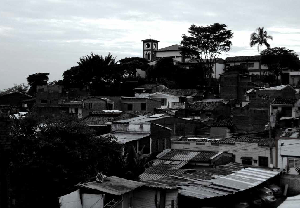Resumen
Hoy en día, la mayor parte de las ciudades del mundo cuentan con inventarios de su patrimonio urbano-arquitectónico, los cuales están caracterizados de manera precisa de acuerdo con el nivel de interés utilitario que representan para la urbe. Es por esto que un gran número de bienes patrimoniales permanecen aún invisibles para la propia comunidad, lo cual dificulta el manejo de los mismos para su comprensión y conservación. El presente artículo tiene como interés el conjunto de casas vernáculas del piedemonte de San Cayetano en Cali, el cual hace parte de la comuna fundacional de la ciudad, y busca que sea reconocido por toda la población dada la riqueza de tradiciones que aún perviven y así proporcionarle el manejo para su preservación. La perspectiva teórica se propone a partir del concepto de decoración, el cual deriva de la concepción de la arquitectura en su doble forma de producción: como manifestación física que permite su ocupación y como manifestación de las relaciones simbólicas propias de la cultura. De este modo, la decoración, en su acepción contemporánea, se plantea como los comportamientos sociales que permiten la organización del espacio material, por lo cual se precisa de instrumentos investigativos que permitan develar tanto las formas de organización de lo físico, como las formas de representación de lo inmaterial
La revista Apuntes se encuentra registrada bajo la licencia Creative Commons Reconocimiento 4.0 Internacional. Por lo tanto, esta obra se puede reproducir, distribuir y comunicar públicamente en formato digital, siempre que se reconozca el nombre de los autores y a la Pontificia Universidad Javeriana. Se permite citar, adaptar, transformar, autoarchivar, republicar y crear a partir del material, para cualquier finalidad (incluso comercial), siempre que se reconozca adecuadamente la autoría, se proporcione un enlace a la obra original y se indique si se han realizado cambios. La Pontificia Universidad Javeriana no retiene los derechos sobre las obras publicadas y los contenidos son responsabilidad exclusiva de los autores, quienes conservan sus derechos morales, intelectuales, de privacidad y publicidad.
El aval sobre la intervención de la obra (revisión, corrección de estilo, traducción, diagramación) y su posterior divulgación se otorga mediante una licencia de uso y no a través de una cesión de derechos, lo que representa que la revista y la Pontificia Universidad Javeriana se eximen de cualquier responsabilidad que se pueda derivar de una mala práctica ética por parte de los autores. En consecuencia de la protección brindada por la licencia de uso, la revista no se encuentra en la obligación de publicar retractaciones o modificar la información ya publicada, a no ser que la errata surja del proceso de gestión editorial. La publicación de contenidos en esta revista no representa regalías para los contribuyentes.


